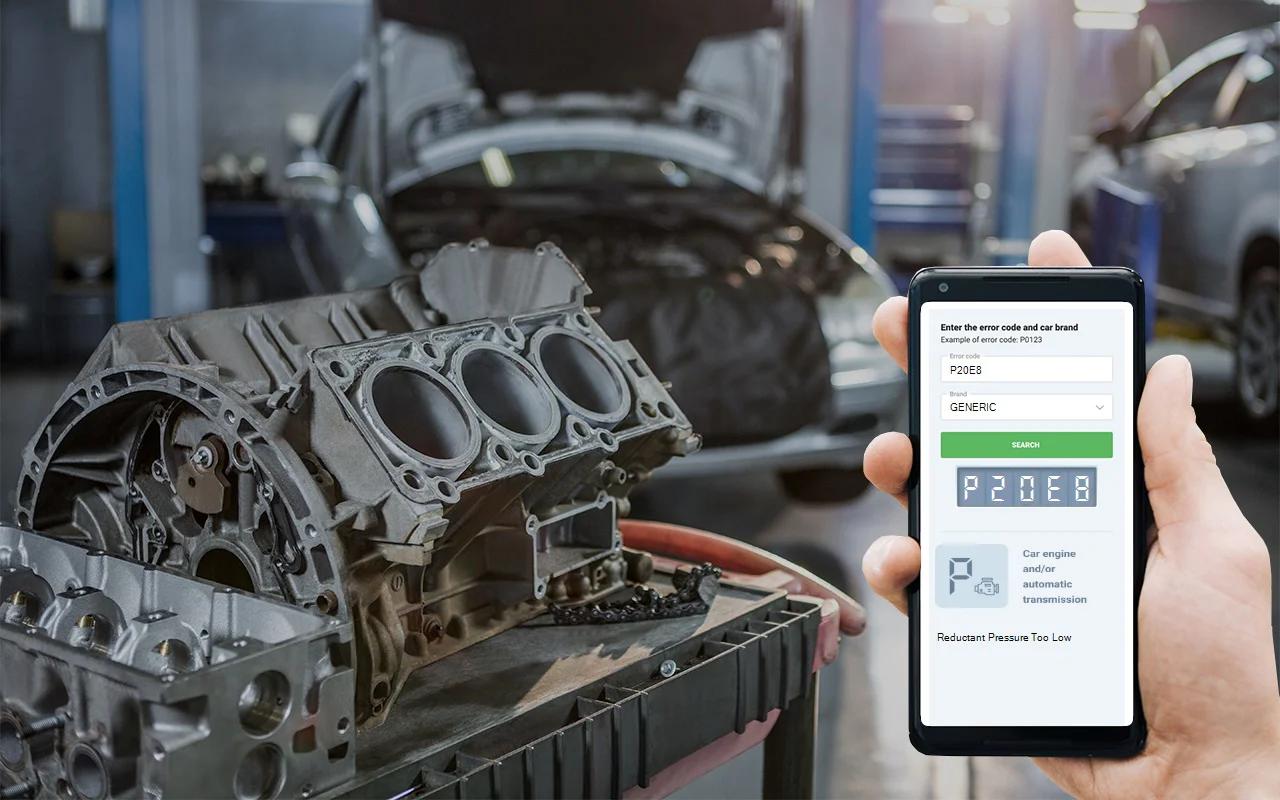The P20E8 code stands for “Diesel Intake Air Flow Position Sensor Circuit Low.” In plain English, this means your truck’s computer (the PCM) is seeing a problem with the sensor that keeps track of how much clean air is coming into the engine. This sensor, called the Diesel Intake Air Flow Position Sensor (DIAFPS), helps the engine figure out the right mix of air and exhaust gases, especially for the exhaust gas recirculation (EGR) system. When the PCM notices the sensor’s signal is too low-usually under 0.3 volts, or just not matching what it expects during normal driving-it sets this code. This system is crucial for keeping emissions in check and making sure your engine runs smoothly, so when something’s off here, it can throw a wrench in the works.
DTC P20E8
Main Causes of P20E8 Engine Code
From what I’ve seen in the shop and what the official manuals say, the most common reasons for a p20e8 code are pretty straightforward. Most often the issue is:
- A short or ground in the wiring going to the DIAFPS sensor. Sometimes a wire rubs through or gets pinched, and that’s all it takes.
- The DIAFPS sensor itself has gone bad. Sensors do fail, especially with age or exposure to the elements.
- In rare cases, the PCM (the truck’s main computer) could be at fault, but that’s not where I’d start.
From experience, wiring and sensor problems are by far the most common. I recommend starting your checks there before worrying about the computer. This error can also happen on car brands like Ford, Renault, or Audi.
Recognizing P20E8 Symptoms
If your truck has a sa 17 dtc p20e892 code, here’s what you’re likely to notice:
- The check engine light will be on-sometimes that’s the only clue at first.
- The engine might get stuck at a low idle speed and just won’t rev up like it should.
- The EGR system could stop working, which can mess with emissions and performance.
- You might see extra soot or smoke, because the diesel particulate filter isn’t able to burn off the buildup properly.
Honestly, these symptoms can make your truck feel sluggish and can lead to bigger problems if left unchecked.

Effective Diagnosis for P20E8 Trouble Code
Here’s how I usually tackle a dtc p20e8 audi code, step by step:
- First, I always start by checking for any other codes. Sometimes, another code can point you in the right direction or help rule out other issues.
- Next, I visually inspect the wiring and connectors going to the DIAFPS sensor. Look for any obvious damage, loose connections, or corrosion. It’s best to have someone wiggle the wires while you watch for changes.
- Then, I use a multimeter to check the voltage at the sensor. With the key on, engine off, you should see a voltage within the normal range (usually above 0.3 volts). If it’s low or zero, that’s a big clue.
- If the wiring checks out, I’ll swap in a known-good sensor (if available) or test the sensor’s resistance according to the specs in the repair manual.
- Finally, if the sensor and wiring are both good, only then do I consider the PCM as a possible culprit. That’s rare, but it can happen.
Don’t forget to check for Technical Service Bulletins (TSBs) related to this code for your specific make and model-sometimes there’s a known fix or updated part.

Avoiding Common Mistakes with P20E8 Code
One thing I see too often is folks jumping straight to replacing the sensor without checking the wiring first. That’s a surefire way to waste money. Another common mistake is ignoring other codes that might be present-sometimes the root cause is elsewhere, and you’ll miss it if you don’t look at the whole picture. Also, don’t forget to check the connectors for corrosion or bent pins; it’s easy to overlook but can cause all sorts of headaches.

How Serious is obd code P20E8
This isn’t something you want to put off. When the DIAFPS sensor circuit is acting up, your engine can’t manage airflow and emissions properly. That can lead to poor performance, increased soot buildup, and even damage to the EGR system or diesel particulate filter. Things can go south quickly if overlooked, and repairs get a lot more expensive down the line. Honestly, it’s dangerous to ignore this, especially if your truck starts running rough or loses power on the road.
Repair Steps for obd2 code P20E8
Here’s what usually fixes a p20e8 issue, based on what I’ve seen and the official procedures:
- Repair or replace any damaged wiring or connectors going to the DIAFPS sensor.
- Replace the DIAFPS sensor if it’s found to be faulty.
- In rare cases, reprogram or replace the PCM if it’s determined to be the issue (after all other checks).
- Clear the code and test drive to make sure the problem doesn’t come back.
It’s best to start with the simple stuff-wiring and connectors-before moving on to parts replacement.
Conclusion
To sum it up, the P20E8 code means your truck’s computer isn’t getting the right signal from the diesel intake air flow position sensor. This is a high-priority issue because it affects engine performance and emissions, and can lead to costly damage if ignored. The most reliable way to fix it is to carefully check the wiring and sensor first, and only consider the PCM as a last resort. Don’t put this off-addressing it now will save you a lot of trouble and keep your truck running strong.




